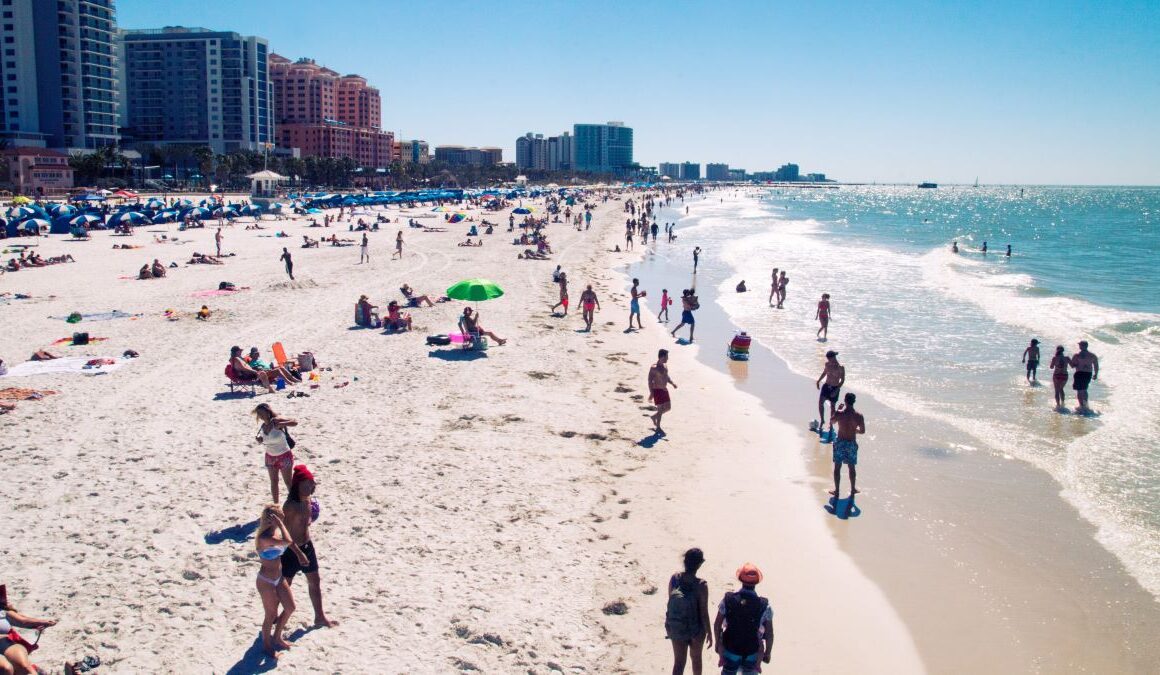Better Beach Habits – Earth911
Few experiences in life are as carefree as a day at the beach. But carefreeness can cross the line into carelessness. And careless beachgoers can really hurt the seaside they enjoy so much. Taking care of the beach where you play doesn’t have to be a buzzkill. With a little bit of planning and basic respect, you can pull an environmental-themed beach read from your sustainable beach bag and relax into a better day at the beach.
Beach Ecosystems
Even if a beach looks like no more than a deserted stretch of sand, it is actually a living ecosystem. Beaches are liminal areas where multiple systems come together and can be incredibly rich with biodiversity. But crowded, heavily developed beaches can affect the water quality and sea life right offshore. Beaches are subject to degradation from erosion, which occurs primarily through development and storms. Heavy traffic and irresponsible behavior can contribute to erosion as well. Sand and water can become contaminated with chemical and plastic pollution released upstream or at the beach. Sea animals, as well as creatures living in the intertidal zone and on land near the water can also be harmed directly by the actions of people visiting the area.
Before You Go
Your actions at home – even if you live far inland – can affect coastal ecosystems. Chemical pollution washes down from inland watersheds, so reconsider your fertilizer and pesticide use. Wash your car at the car wash instead of in the driveway. If you change your own oil, collect and recycle it properly.
Plastic litter – including PPE and cigarette butts, as well as water bottles and other packaging – travels great distances to reach the sea. There it collects on beaches and washes into the ocean where it forms massive garbage gyres and harms wildlife. Try to eliminate single-use plastics from your home and pick up plastic litter wherever you see it.
Better at the Beach
Driving on the beach can cause erosion. In most places it is illegal, but even in the few places where it is allowed, don’t drive on the beach. Similarly, if a beach area has designated paths, stay on them – they are there for a reason and may be protecting nests or unstable soils. Don’t step on plants or pull grasses that grow on the beach, as their roots help stabilize the sand.
Unless your car is leaking oil in the parking lot, chemical sunscreen is the main chemical pollutant emitted by beachgoers. An estimated 14,000 tons of sunscreen enter the oceans every year. Chemicals used in sunscreen include suspected carcinogens. Besides the potential harm to the person wearing sunscreen, chemicals in sunscreen are toxic to sea life and contribute to coral reef bleaching. Hawaii has banned the sale of sunscreen containing the coral-harming chemicals oxybenzone and octinoxate. Even if you don’t have a ticket to Hawaii, choosing a Hawaii-approved reef-safe sunscreen is a good idea.
Nothing beats a picnic on the beach, but windblown plastic packaging and abandoned take-out containers can really ruin the vibe. Pack your picnic in reusable containers and take all of your garbage home with you. Garbage cans at beaches are often filled to overflowing and picked over by seagulls. This results in garbage blowing around the beach and getting washed into the water, where it eventually contributes to giant garbage gyres with sometimes devastating results for wildlife. While you’re cleaning up your own garbage, spend a few minutes picking up plastic litter from the beach before you go.

Beach Creatures
It’s natural to want to get closer to sea creatures when you find them. But wildlife at the beach, as elsewhere, does not benefit from interacting with humans. Don’t feed, handle, or chase animals you see in the water or on the beach. Don’t touch or even get close to nests of any kind, even if they are not currently occupied because you can introduce pathogens. Try not to damage any tracks you see on the beach, especially turtle tracks, which provide information to researchers.
Follow all fishing and clamming regulations to avoid overharvesting. Don’t take home small animals like crabs for the same reason. And even though driftwood and seashells make great souvenirs, it’s better to leave all natural materials where you found them. They are part of the ecosystem, and even though a few seashells won’t be missed, beaches can be devastated by the loss of material when hundreds of visitors each take just a few.
If you follow these guidelines for better beach habits (and work to reduce your carbon footprint the rest of the year) you’ll be contributing to keeping the seashore beautiful for generations to come.

